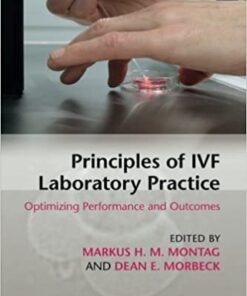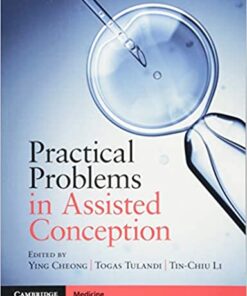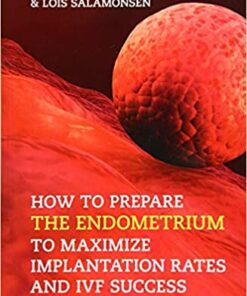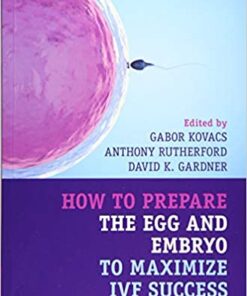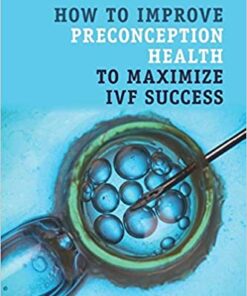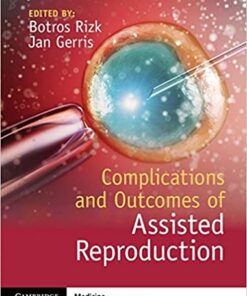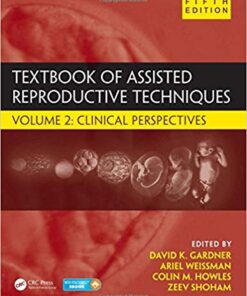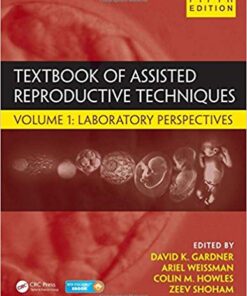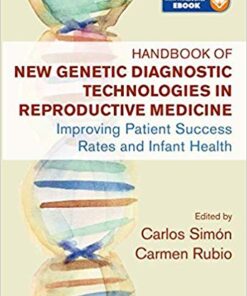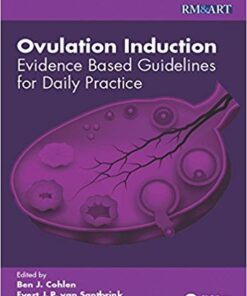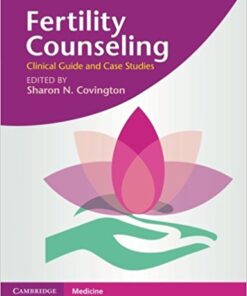Understanding Infertility and Assisted Reproductive Techniques: A Guide for Couples
Take Control of Your Fertility with Assisted Reproductive Techniques
Infertility is a common issue that affects many couples. Fortunately, there are now assisted reproductive techniques available to help you take control of your fertility and increase your chances of having a baby. From in vitro fertilization (IVF) to intrauterine insemination (IUI), these treatments can help you achieve the family you’ve always wanted. At SurgeryBook.net, we provide comprehensive information about infertility and assisted reproductive techniques. Our website offers detailed descriptions of each procedure, as well as advice on how to choose the right treatment for you. We also provide resources to help you find a qualified fertility specialist in your area. Don’t let infertility stand in the way of your dreams. Take control of your fertility today by visiting SurgeryBook.net and learning more about assisted reproductive techniques.
INFERTILITY & ASSISTED REPRODUCTIVE TECHNIQUES
INFERTILITY & ASSISTED REPRODUCTIVE TECHNIQUES
INFERTILITY & ASSISTED REPRODUCTIVE TECHNIQUES
INFERTILITY & ASSISTED REPRODUCTIVE TECHNIQUES
The Sperm Cell: Production, Maturation, Fertilization, Regeneration 2nd Edition PDF
INFERTILITY & ASSISTED REPRODUCTIVE TECHNIQUES
Reproductive Surgery: The Society of Reproductive Surgeons’ Manual 1st Edition PDF
INFERTILITY & ASSISTED REPRODUCTIVE TECHNIQUES
INFERTILITY & ASSISTED REPRODUCTIVE TECHNIQUES
Principles of IVF Laboratory Practice: Optimizing Performance and Outcomes 1st Edition PDF
INFERTILITY & ASSISTED REPRODUCTIVE TECHNIQUES
INFERTILITY & ASSISTED REPRODUCTIVE TECHNIQUES
INFERTILITY & ASSISTED REPRODUCTIVE TECHNIQUES
Male and Sperm Factors that Maximize IVF Success Illustrated Edition PDF
INFERTILITY & ASSISTED REPRODUCTIVE TECHNIQUES
INFERTILITY & ASSISTED REPRODUCTIVE TECHNIQUES
In-Vitro Fertilization: The Pioneers’ History 1st Edition PDF
INFERTILITY & ASSISTED REPRODUCTIVE TECHNIQUES
How to Prepare the Endometrium to Maximize Implantation Rates and IVF Success 1st Edition PDF
INFERTILITY & ASSISTED REPRODUCTIVE TECHNIQUES
How to Prepare the Egg and Embryo to Maximize IVF Success 1st Edition PDF
INFERTILITY & ASSISTED REPRODUCTIVE TECHNIQUES
How to Improve Preconception Health to Maximize IVF Success 1st Edition PDF
INFERTILITY & ASSISTED REPRODUCTIVE TECHNIQUES
INFERTILITY & ASSISTED REPRODUCTIVE TECHNIQUES
INFERTILITY & ASSISTED REPRODUCTIVE TECHNIQUES
INFERTILITY & ASSISTED REPRODUCTIVE TECHNIQUES
Fertility Challenges and Solutions in Women with Cancer 1st ed. 2020 Edition PDF
INFERTILITY & ASSISTED REPRODUCTIVE TECHNIQUES
INFERTILITY & ASSISTED REPRODUCTIVE TECHNIQUES
INFERTILITY & ASSISTED REPRODUCTIVE TECHNIQUES
Subfertility, Reproductive Endocrinology and Assisted Reproduction 1st Edition PDF
INFERTILITY & ASSISTED REPRODUCTIVE TECHNIQUES
INFERTILITY & ASSISTED REPRODUCTIVE TECHNIQUES
INFERTILITY & ASSISTED REPRODUCTIVE TECHNIQUES
Textbook of Assisted Reproductive Techniques: Volume 2: Clinical Perspectives 5th Edition PDF
INFERTILITY & ASSISTED REPRODUCTIVE TECHNIQUES
Textbook of Assisted Reproductive Techniques: Volume 1: Laboratory Perspectives 5th Edition PDF
INFERTILITY & ASSISTED REPRODUCTIVE TECHNIQUES
INFERTILITY & ASSISTED REPRODUCTIVE TECHNIQUES
Ovulation Induction : Evidence Based Guidelines for Daily Practice
INFERTILITY & ASSISTED REPRODUCTIVE TECHNIQUES
Atlas of Vitrified Blastocysts in Human Assisted Reproduction
INFERTILITY & ASSISTED REPRODUCTIVE TECHNIQUES
Introduction
This guide provides couples with an in-depth understanding of infertility and assisted reproductive techniques (ART). It covers the causes of infertility, available treatments, and the emotional and financial implications of ART. With this comprehensive guide, couples can make informed decisions about their fertility journey and gain a better understanding of the options available to them.
What is Infertility and How is it Diagnosed?
Infertility is a medical condition that affects both men and women, and it is defined as the inability to conceive after one year of unprotected intercourse. It can be caused by a variety of factors, including hormonal imbalances, structural problems, or lifestyle choices.
In order to diagnose infertility, a doctor will typically begin with a physical exam and a review of the patient’s medical history. This may include questions about any previous pregnancies, menstrual cycles, and sexual activity. The doctor may also order blood tests to check hormone levels, as well as imaging tests such as an ultrasound or X-ray to look for any structural abnormalities.
For women, the doctor may also perform a pelvic exam to check for any signs of infection or other issues. In some cases, the doctor may recommend a laparoscopy, which is a surgical procedure that allows them to view the reproductive organs directly.
In men, the doctor may order a semen analysis to check for sperm count, motility, and morphology. They may also order a testicular biopsy to check for any blockages in the tubes that carry sperm from the testicles to the penis.
Once the cause of infertility has been identified, the doctor can then recommend treatment options. These may include medications, surgery, or assisted reproductive technologies such as in vitro fertilization (IVF).
No matter what the cause of infertility is, it is important to remember that there are many options available to help couples conceive. With the right diagnosis and treatment, many couples are able to successfully have a baby.
Exploring Assisted Reproductive Techniques: In Vitro Fertilization, Intrauterine Insemination, and More
Exploring Assisted Reproductive Techniques (ART) is an important step for couples who are struggling to conceive. ART includes a variety of treatments that can help couples achieve pregnancy, such as in vitro fertilization (IVF), intrauterine insemination (IUI), and more.
In vitro fertilization (IVF) is one of the most common forms of ART. During IVF, eggs are retrieved from the woman’s ovaries and fertilized with sperm in a laboratory setting. The resulting embryos are then transferred into the woman’s uterus, where they can implant and develop into a healthy pregnancy. IVF is often used when other fertility treatments have failed or when there are issues with the woman’s fallopian tubes.
Intrauterine insemination (IUI) is another form of ART. During IUI, sperm is inserted directly into the woman’s uterus, bypassing the cervix. This increases the chances of conception by increasing the number of sperm that reach the egg. IUI is often used when there are issues with the man’s sperm count or motility.
Other forms of ART include gamete intrafallopian transfer (GIFT), zygote intrafallopian transfer (ZIFT), and intracytoplasmic sperm injection (ICSI). GIFT involves transferring both the egg and sperm into the woman’s fallopian tube, where fertilization can occur naturally. ZIFT involves transferring a single fertilized egg into the woman’s fallopian tube. ICSI involves injecting a single sperm directly into the egg in a laboratory setting.
No matter which form of ART is chosen, it is important to discuss all options with a fertility specialist. Each form of ART has its own risks and benefits, and it is important to understand these before making a decision. With the right treatment plan, couples can increase their chances of achieving a successful pregnancy.
Understanding the Costs and Insurance Coverage of Assisted Reproductive Techniques
Assisted reproductive techniques (ART) are medical procedures used to help couples conceive a child. These techniques can be expensive and may not be covered by insurance, so it is important to understand the costs and insurance coverage of ART before beginning treatment.
The cost of ART varies depending on the type of procedure and the clinic where it is performed. In vitro fertilization (IVF), for example, typically costs between $12,000 and $15,000 per cycle. Intracytoplasmic sperm injection (ICSI) is usually more expensive than IVF, costing between $15,000 and $20,000 per cycle. Other types of ART, such as donor egg or sperm, frozen embryo transfer, and surrogacy, can also be costly.
In addition to the cost of the procedure itself, there are other associated costs that must be taken into consideration. These include medications, laboratory fees, and travel expenses. It is important to ask your doctor or clinic about all of the associated costs before beginning treatment.
Insurance coverage for ART varies from state to state and from insurer to insurer. Some states have laws that require insurers to cover certain types of ART, while others do not. Additionally, some insurers may offer coverage for certain types of ART, while others may not. It is important to check with your insurance provider to determine what types of ART are covered and what out-of-pocket costs you may be responsible for.
It is also important to note that some clinics may offer financing options to help cover the cost of ART. These options may include payment plans, loans, or grants. It is important to ask your clinic about any financing options they may offer.
Understanding the costs and insurance coverage of ART is an important part of the process when considering treatment. Knowing what to expect financially can help you make an informed decision about whether or not to pursue treatment. It is important to speak with your doctor or clinic about the costs and insurance coverage of ART before beginning treatment.
Preparing for Treatment: Emotional and Physical Considerations
Preparing for treatment is an important step in the recovery process. It requires both emotional and physical considerations to ensure that you are ready to begin your journey towards healing.
Emotionally, it is important to be aware of any feelings of fear or anxiety that may arise as you prepare for treatment. It is normal to feel scared or overwhelmed when facing a new challenge, but it is important to remember that you are not alone. Talking to a trusted friend or family member can help to alleviate some of these feelings. Additionally, seeking out support groups or therapy can provide a safe space to express your emotions and gain insight into how to best manage them.
Physically, it is important to make sure that you are taking care of yourself before beginning treatment. Eating a balanced diet, exercising regularly, and getting enough sleep are all essential components of self-care. Additionally, it is important to make sure that you have access to any medications or treatments that you may need during your recovery. If you are unsure of what you will need, speak with your doctor or therapist to get more information.
Finally, it is important to create a plan for how you will manage your time during treatment. This could include setting aside time for self-care activities such as yoga or meditation, scheduling regular check-ins with friends and family, and making sure that you have enough time to rest and relax.
Preparing for treatment can be a daunting task, but it is an important step in the recovery process. By taking the time to consider both emotional and physical considerations, you can ensure that you are ready to begin your journey towards healing.
Navigating the Legal Aspects of Assisted Reproductive Techniques
Navigating the legal aspects of assisted reproductive techniques (ART) can be a complex and daunting task. ART is a broad term that encompasses a variety of medical procedures used to help individuals or couples conceive a child. These procedures include in vitro fertilization (IVF), artificial insemination, egg donation, and surrogacy. Each of these procedures has its own set of legal considerations that must be taken into account before proceeding.
The first step in navigating the legal aspects of ART is to understand the laws in your state. Every state has different laws governing ART, so it’s important to research the laws in your area before beginning any procedure. Some states have laws that prohibit certain types of ART, while others may require certain steps to be taken before a procedure can be performed. It’s also important to understand the implications of any contracts you may enter into with a fertility clinic or other provider.
In addition to understanding the laws in your state, it’s also important to consider the ethical implications of ART. Many people have strong opinions about the use of ART, and it’s important to consider these opinions before making any decisions. For example, some people believe that using donor eggs or sperm is unethical, while others believe that it is a viable option for those who are unable to conceive naturally.
Finally, it’s important to consider the financial implications of ART. ART procedures can be expensive, and it’s important to understand the costs associated with each procedure before committing to anything. Additionally, many insurance companies do not cover the cost of ART, so it’s important to research what options are available to you.
Navigating the legal aspects of ART can be a complicated process, but it’s important to take the time to understand the laws and ethical considerations before beginning any procedure. Doing so will ensure that you make an informed decision that is best for you and your family.
Conclusion
In conclusion, infertility can be a difficult and emotional journey for couples. Understanding the causes of infertility and the available assisted reproductive techniques can help couples make informed decisions about their fertility options. With the right support and guidance, couples can find the best treatment plan to help them achieve their dream of having a family.







